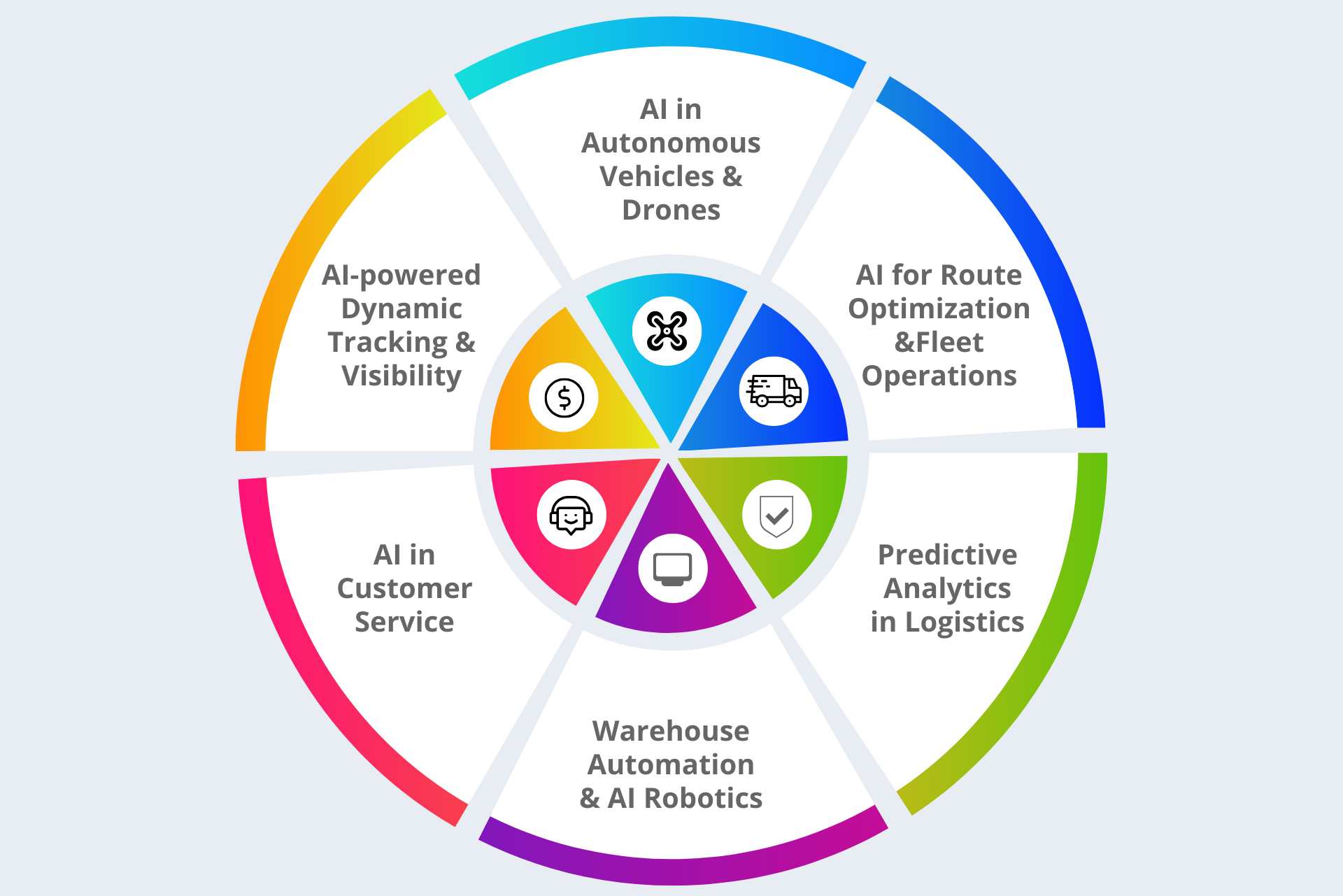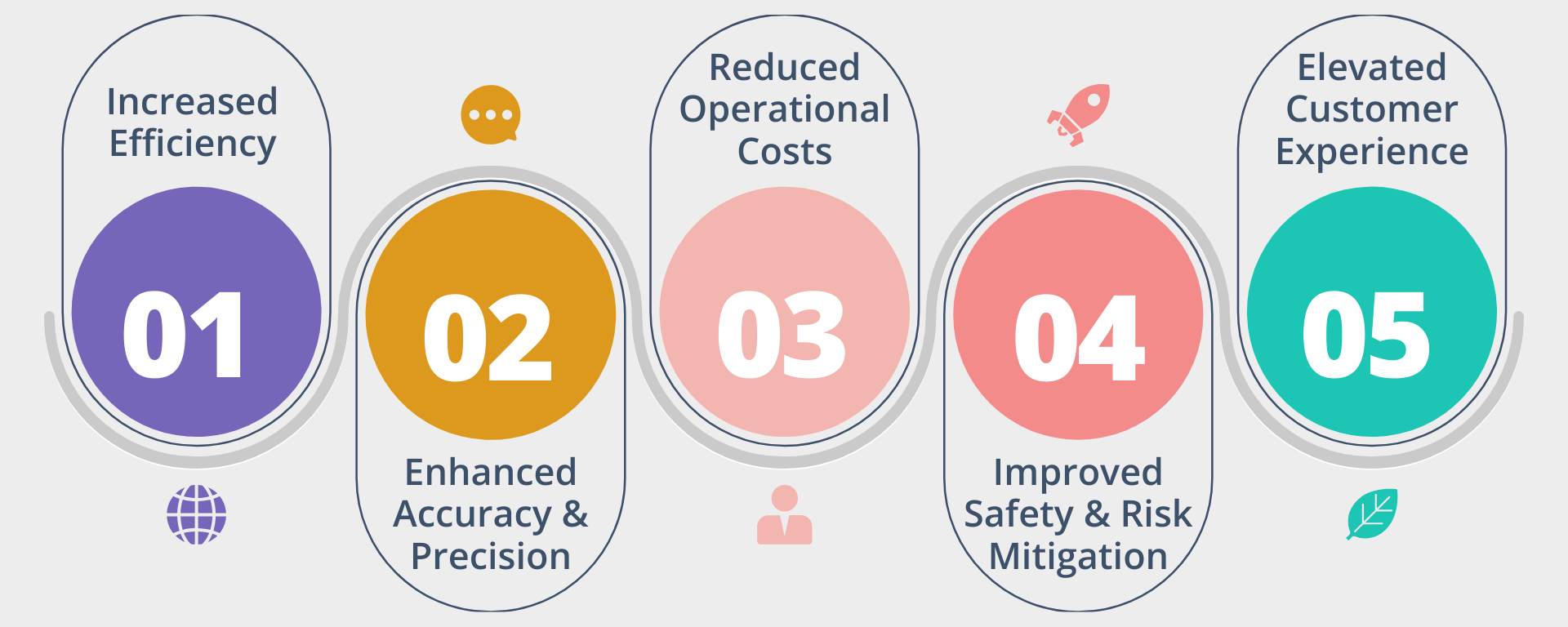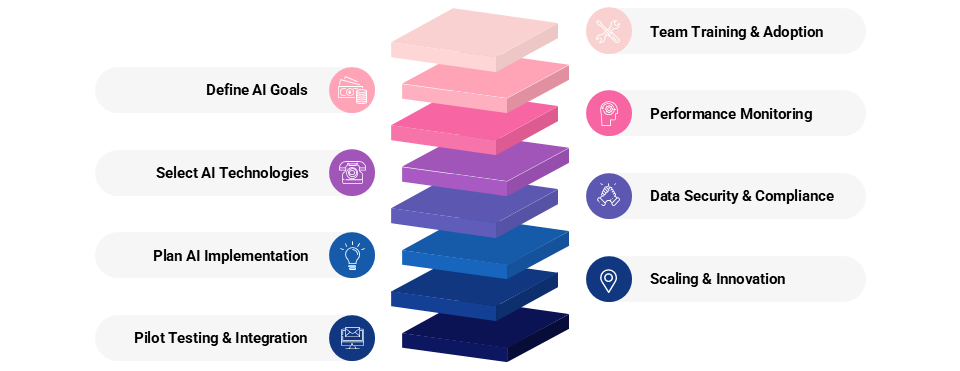Introduction
Artificial intelligence (AI) is redefining transportation and logistics by bringing automation, optimization, and quality decision-making into vehicles and facilities. AI in logistics is revolutionizing the transport of goods and people, claiming to be unique in the level of optimization and creativity.
AI in the transportation and logistics industries continues to proliferate. No longer a futuristic concept, from self-driving cars to intelligent storage and data-driven forecasting, it is gradually being implemented into the industry and significantly enhancing the existing status of operation.
Intelligent transportation systems and logistics present realistic values, such as cost savings, risk management, and effective customer satisfaction. The role of artificial intelligence in transportation is expected to change more in the industry’s future, opening the door to significant transformations.
What is AI?
AI, as defined, can be understood as a class of computational systems capable of perceiving and processing information in ways that are inherent to human logic. It includes machine learning, deep learning, and autonomous decision-making in order to solve problems and analyze the data.
AI replicates human brain functions, which includes the ability of a machine to learn from experience, understand it, and act accordingly without consulting its makers. AI development services can also sort large amounts of data to arrive at a decision.
AI procedures comprise data evaluation, prediction, and automation. AI systems gather information and make decisions based on it, predict the outcomes, and execute operations autonomously to transform different fields. It can play a critical role in logistics app development.
The Growing Role of AI in Transportation and Logistics

AI in Autonomous Vehicles and Drones
Artificial intelligence in logistics makes it possible for trucks, delivery cars, and drones to move and transport goods on roads and in the skies on their own. AI for autonomous drones also increases delivery time, decreases operational costs, and is safer than involving human transport in moving stocks.
Real-world examples of AI-powered Autonomous Vehicles in Logistics:
Waymo: It uses autonomous vehicles in logistics and works on technology that drives trucks and cars autonomously to increase the safety and effectiveness of express delivery and ‘last mile’ logistics.
TuSimple: It focuses on self-driving technologies for big rigs and conducts successful trials on highways in an effort to deliver packages faster and save money.
Amazon Prime Air: It is deploying drones operated by artificial intelligence for quick delivery of small parcels in order to disrupt the last-mile delivery services industry within cities.
AI for Route Optimization and Fleet Operations
AI in transportation revolutionizes route planning as it takes into account live data such as traffic situation, weather, and fuel. What makes artificial intelligence in logistics useful is that it also helps in adjusting delivery dates and is helpful in decreasing transportation time.
AI-powered fleet management systems make vehicle maintenance, fuel consumption rates, and driving performance better. These systems also include elements that anticipate when it is necessary to carry out regular maintenance, the amount of fuel used, and the performance of the work that the driver is giving the cargo to the consignment notes, among others, enhancing the efficiency of the fleet.
Predictive Analytics in Logistics
AI for predictive analytics in logistics is more effective in demand management, inventory management, and supply chain management. Thus, AI in logistics uses the learned information and, respectively, the past and the present to organize the future requirements and improvements of companies.
With real-time information from AI, businesses can avoid overstocking or understocking and do perfect inventory. This results in a relatively low cost and timely delivery of products to customers, hence enhancing cash flow.
Warehouse Automation and AI Robotics
Robots and automation are used in warehousing functions the same way a power tool is to a mechanic, sorting, packing, and even regulating stock. The virtue of AI in warehouse automation is that it helps in improving efficiency and minimizing mistakes. The facility is able to operate round the clock in the logistics center.
Robotics provides an added advantage in operations because it eliminates the time and inconvenience of performing repetitive work. AI-powered logistics can enable automated industrial robots to work and extend their hours without getting fatigued, which saves time and reduces the chances of mistakes during warehousing operations.
AI in Customer Service
Cognitive computing, the fourth revolution of computer linking, is in use to offer consumer care in logistics with the cover of artificial intelligence chatbots, virtual personal assistants, and voice interface systems. AI for customer service in logistics helps in responding to customer queries, following up on orders, and offering status updates, making the entire experience a delight.
It enhances customers’ response time during real-time conversations with the company. AI increases the overall performance of logistics customer support since users get quick responses to their queries from the system.
Dynamic Tracking and Visibility Powered by AI
With real-time features, it monitors and tracks the shipment, provides shipment visibility, and provides proactive shipment notifications. This technology offers reliable coordinates and an estimated time of arrival and informs interested parties of possible exceptions.
By geographically visualizing shipments and providing comprehensive and precise data, AI FY promotes customs transparency and enhances customers’ trust in delivery times. It leads to increased visibility of all the processes that occur in the chain and helps to prevent issues before they arise.
Key Benefits of AI in Transportation and Logistics

Increased Efficiency
Technological related features such as artificial intelligence, automation, industry insights, and optimized procedures enhance productivity in logistics. Through AI for route optimization and planning, prognostic maintenance requirements, and increased automation, evaluative performance is improved.
Enhanced Accuracy and Precision
Use of artificial intelligence algorithms reduces human interference in data analysis, thus making logistics decision-making accurate. This results in lesser inaccuracies with regard to stock administration, order dispatch, and delivery route planning and, thus, better service delivery.
Reduced Operational Costs
Energy utilization is done systematically, production time is not wasted, and repetitive and repetitive manual efforts are minimized, which, in the end, leads to major cost savings. Its use improves the flow of materials and resources, which gives logistics companies a more economical and competitive manner of operation.
Improved Safety and Risk Mitigation
AI in autonomous systems reduces accident rates and provides risk alerts that a driver or manager would be unable to provide in real-time. Prominent benefits improve the general safety of transport and allow companies to look for potential risks in advance.
Elevated Customer Experience
The ability to respond, individual approach, and immediacy of operational information increase customer satisfaction in logistics through the use of AI. AI makes transportation and delivery services even better by offering accurate information and swift service to customers.
Implementing AI in Transportation and Logistics: A Step-by-Step Guide

Assess Business Needs and Define AI Goals
The logical starting point is the assessment of the weaknesses of your logistics and the definition of how an AI solution would address your particular goals. Find out where AI can be most useful once deployed. For example, AI-driven warehouse automation can help choose the best route or restock the warehouse.
Select the Right AI Technologies
Opt for AI solutions. Select the options that suit your niche in autonomous vehicles in logistics, predictive analysis, automated warehouses, and customer relations. The decision-making constituents of AI technologies include scalability, compatibility, and the rate of return.
Develop a Strategic AI Implementation Plan
Develop a detailed implementation plan to navigate AI adoption in stages with specific goals and required resources. As part of this plan, the organization should note out the process of gradually introducing AI, from prototyping to large-scale deployment.
Pilot Testing and Integration
Introduce limited-scale AI initiatives in selected domains to ensure effectiveness and compliance with broader goals. It makes it possible to calibrate the approach and solve any integration issues before going to the large-scale implementation.
Team Training and Adoption
Ensure that there is adequate staff training on how to use and efficiently manage the AI systems. Clarify for the staff where AI can provide advantages and ensure that people are ready to include new technologies in their work.
Performance Monitoring and Continuous Optimization
In order to ensure that the implementation of AI does not create negative repercussions for any key performance indicators, follow these steps: Maintaining and improving constantly makes sure that AI solutions are effective and relevant to the business.
Ensure Data Security and Compliance
Ensure proper cybersecurity measures are in place and follow compliance with data protection laws while using AI systems. Manage risks associated with the integrity and confidentiality of data in order to be in accordance with regulations and standards.
Scaling and Innovating AI Solutions
Enhance deployment of AI in other logistics operations and research for new AI expeditions to sustain competition. Be aware of new advances in AI technology and always look at how it may be possible to improve processes with this technology.
Source: https://www.sigmasolve.com/how-ai-is-shaping-the-future-of-transportation-and-logistics/
